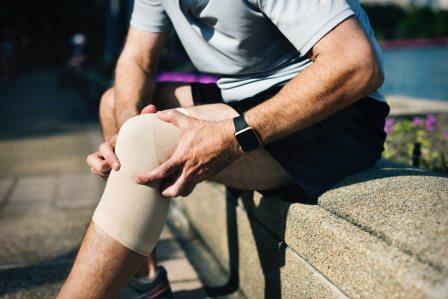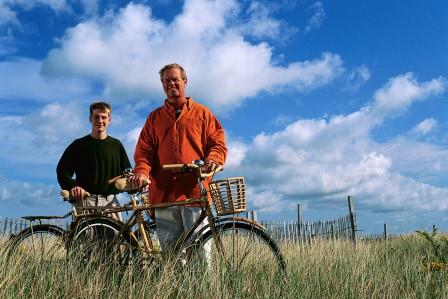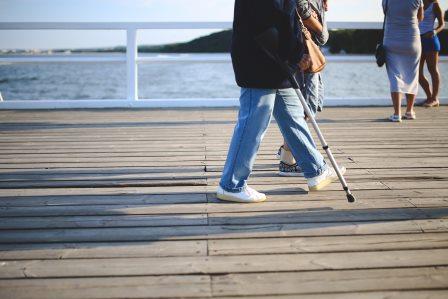ALISON MORRIS AND ABI POLUS
Alison Morris is Senior Musculoskeletal Physiotherapist, Perth Children's Hospital and Co-chair of the Australian And New Zealand Physiotherapy Haemophilia Group
Abi Polus is Senior Clinical Physiotherapist – Haemophilia, Ronald Sawers Haemophilia Centre, The Alfred hospital, Melbourne
This information will hopefully assist individuals and families living with bleeding disorders to stay safe and healthy during this period of change.
Please remember that the advice provided here is generic and you should contact your Haemophilia Treatment Centre (HTC) to discuss any specific issues or concerns.
These are unprecedented times. Individuals and families have been adjusting to home isolation, working from home, online schooling and the cancellation of sporting activities, and now to the structured easing of restrictions related to the COVID-19 pandemic.
The way health care services are provided is also changing. Health care workers transitioned, where possible, to video conference consultations to minimise the need to attend the hospital in person, and many are wondering if this will become the new normal?

Firstly, management of acute bleeding episodes remains a priority and treatment pathways are currently unchanged. Presentation at hospital for joint bleeds that cannot be managed at home for factor infusion and other usual management is still occurring. If you are concerned you (or your child) are having a joint or muscle bleed, please follow the routine procedure of calling the HTC for advice or if out of hours presenting to the Emergency Department. Emergency Departments still have strict protocols for triaging potentially COVID-19 positive patients to minimise risk.
Remember, at the first sign of a lower limb joint bleed, aim to stay off the affected leg by using a wheelchair, crutches or a pram and if you are able to, compress the area with a bandage. Follow-up care, including physiotherapy, can be conducted in the HTC or Physiotherapy department as per your hospital’s protocol, if needed. Where appropriate it may be conducted via video conference.

We know that the greatest risk for bleeding is the time spent with low factor levels (especially <3%) and individualised prophylaxis regimes have been designed to avoid this. Missed or delayed doses of factor greatly increase the risk of a bleeding episode. Even though you may be doing less, you may still bleed, or have a minor injury, especially with resumption of activities not undertaken for a while, this may place potential strain on atrophied muscles needed to protect joints. Factor replacement also offers long term protection of your joints from bleeds which can result in tertiary arthritis.
Routines may be disrupted once again. Individuals and families have already shared that maintaining routine has been more difficult as routines have changed. Instead, it may be helpful to set reminders/alarms in phones or place Post It notes on the fridge until new (or old) routines are re-established. For those with myWAPPS set up, you also need to make checking current levels a habit before engaging in any activity.

Exercise remains an integral part of management for all people with a bleeding disorder.
For those who normally participate in organised sport or regularly attend the gym, it is vital that you maintain your fitness to protect your joints. Those who will be returning to sporting teams need to ensure they reduce the risk of injury when the season recommences. Joints NEED to move to be healthy. Similarly, muscles need to have their usual (or increased) demands put on them or they will atrophy (waste).
You are able to go outdoors to exercise so walk, run, cycle or swim (beach or backyard pool) plus set up some training drills in the backyard or local parks, and now most can train in small groups. For those who engage in activities that involve changes of direction, the FIFA 11+ program (readily available on the internet) is a safe and balanced program of strength, fitness and agility drills that you could incorporate into your routine 2-3 times per week. Just avoid the exercise that involves jumping into a partner!
For those who normally rely on school PE (Physical Education) and incidental exercise, remember that the minimal activity guidelines for children 5 to 17 years involves 60 minutes of moderate to vigorous exercise each day and activities that strengthen your muscles and bones 3 days per week. Those younger than 5 years of age can go for bike rides and play on their scooters. Put on some music and encourage them to dance or consider setting up obstacle courses in the backyard that involve balancing, throwing and catching, jumping etc. If school activity classes are back to a normal routine, that is great. If it is not yet quite back to normal, activity may need to be supplemented.
For adults it is recommended to have at least 150 minutes of moderate-intensity or 75 minutes of vigorous-intensity aerobic physical activity in a week. Get outside and go for a walk or bike ride and do some body weight-resisted exercises: squats, bridges, calf-raises and wall push-ups or small group training are all good options.
Currently, social media platforms have been flooded with ideas to maintain health and fitness while at home and this is likely to continue. Before starting a program, consider whether the exercise is appropriate to you and your fitness level or experience. Do you have limitations or target joints that you need to consider? Start any new exercise program slowly with low repetitions/sets and weight and gradually increase over time. If you are unsure of the suitability of a program, or would like an individualised program or progression of an existing program, do not hesitate to contact your physiotherapists at the HTC and they can arrange a phone call or video consultation.

It has been an unprecedented time and will affect both your physical and emotional health. There is still a state of flux and it may still be unsettling. Be kind to yourself and look after your physical and emotional health (which of course are linked!) as best you can. HTCs have various professional experts in these areas and can direct you to the best people to help manage your needs. We are open and functioning and flexible – let us help you!
Since we started writing this article, Australia has done an amazing job of ‘flattening the curve’ and lockdown restrictions are being loosened. Of interest to many, will be the release of the Coronavirus (COVID-19) National Principles for the Resumption of Sport and Recreation Activities (available on the Australian Department of Health website – www.health.gov.au). These principles provide a pathway for the safe return to sport following the COVID-19 pandemic. Grass-roots sports played outside have been given the go-ahead to commence modified training in many states and territories. These modifications currently include smaller groups, no contact and maintenance of social distancing where possible.
If you or your child have the green light to resume training, please remember to build up load gradually to reduce the risk of injury. Unfortunately, fitness and muscle strength do not return as quickly as they are lost! Again, seek advice from your local HTC physiotherapist if you have any specific concerns.
It may still be some time before gyms re-open back to the pre-COVID capacity, with this being touted as one of the last restrictions that will be lifted, so those of you who enjoy your workouts may have to continue with your home set ups.
Even with the lifting of restrictions, prevention remains the key!
Stay safe.
If you have any questions about your bleeding disorder and exercise or physical activity, contact your Haemophilia Treatment Centre.
Haemophilia Foundation Australia acknowledges the Traditional Owners and Custodians of Country throughout Australia, the land, waters and community where we walk, live, meet and work. We pay our respects to Elders past and present and extend that respect to all Aboriginal and Torres Strait Islander peoples.
Sign up for the latest news, events and our free National Haemophilia magazine